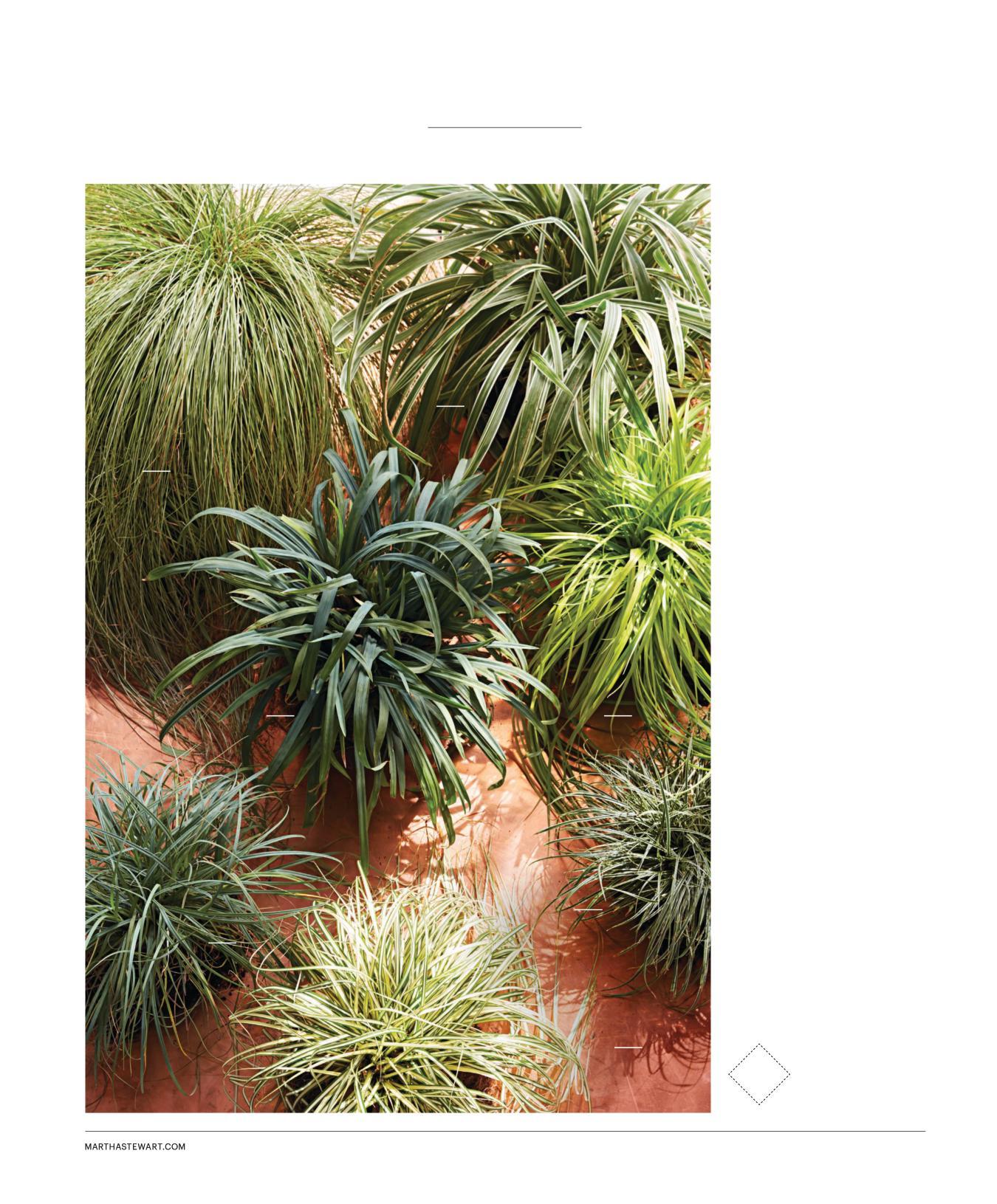
4 minute read
The Find
the find
MEET AND GREET
Advertisement
As Flannery O’Connor might have said, a good doormat is hard to find—but not for lack of options. Pretty ones often don’t perform well (and vice versa), but these five picks are stylish, sturdy, and get the job done.
PHOTOGRAPH BY PETER ARDITO TEXT BY ELYSE MOODY
1 ECO COCO
This all-natural love knot–inspired braid is moldresistant, soft underfoot, and biodegradable.
Terrain Knot Weave, from $98, shopterrain.com.
2 RUBBER, MEET ROAD
No-slip backing made of 90 percent–recycled rubber and a gritty top provide traction for muddy shoes.
Apache Mills Weave, $11.50, homedepot.com.
3 VIP ENTRY
A sharp chevron motif in white pine (with an added replaceable boot brush) has graphic appeal.
Vermont Wooden, from $93, jkadams.com.
4 CABLE KNIT
When floating lobster rope was outlawed in 2009 for entangling whales, the mildewproof cord found new work on shore as a sand and salt stopper.
Cape Cod Doormats The Wave, in Palomino & Taupe, from $44, capecoddoormats.com.
5 FUZZY LOGIC
Stiff coir-bristle stripes reinforced with wire have extra sole-cleaning oomph.
Williams Sonoma Rectangle Stripes Wire Brush, from $70, williams-sonoma.com.
1
5
Home
GOOD LIVING
4 3
To keep these hardworking rugs clean, vacuum or shake them out weekly, and hose them off and hang to air-dry as needed. Coir (aka upcycled coconut fiber) is also used to make cleaning-brush bristles and mattress stuffing.
1
Carex morrowii var. temnolepis ‘Silk Tassel’
3

C. laxiculmis
5
C. flacca
Garden
GOOD LIVING
2
C. siderosticha ‘Variegata’
4
C. oshimensis ‘Everillo’
6
C. conica ‘Snowline’
7
C. oshimensis ‘Evergold’
FINDING A GRASSY PATCH
These grasslike mop-tops, known as carex, are a gardener’s dream. They grow in wet or dry soil, sun or shade, and don’t tempt deer. “There’s one for every situation,” says Bill Kolvek, owner of Bill Kolvek Perennials, in Chestnut Ridge, New York. “They’re tough as nails and long-lived.” Plant now and they’ll pop all season.
PHOTOGRAPH BY BRYAN GARDNER
1. This pompom-like shade lover works well anchoring a rain garden. 2. The clumping broadleaf groundcover is a welcome, pest-resistant alternative to popular dwarf hosta. 3. Native to eastern North America, this evergreen variety can reach a foot in height. 4. For extra-vivid chartreuse foliage, plant it in a spot that gets lots of morning sun. 5. Also known as C. glauca, it’s drought-tolerant once established and slow to spread, so it works nicely in small areas.
6. The dark-green foliage has delicate white edges, and it produces small purple flowers in spring. 7. This weeping variegated cultivar is a showstopper in a container or border.
WIN $25,000!
Enter now for your chance to win $25,000 to create a garden oasis! Visit marthastewart.com/ 25kGarden to enter. For details, see page 109.
American Made
GOOD LIVING
One Stitch at a Time

A young embroidery artist is shaking up the age-old craft with bold botanical scenes so vivid, you can practically smell the flowers.
TEXT BY MELISSA OZAWA
IN 2013, AFTER SARAH K. BENNING had earned her BFA from the School of the Art Institute of Chicago, she wanted a break from the city’s stressful, competitive art scene and took a job as a nanny near Albany, New York. During the children’s naptime, she taught herself how to embroider— first stitching on paper, then later on fabric in hoops—as a way to keep her hands busy. “The more pieces I made, the more I fell in love with the process,” says Benning, who focused on fiber and material studies in school.
She began selling note cards stitched with thread on Etsy, and gradually expanded her offerings to include intricate pieces available on her website (sarahkbenning .com), depicting “scenes of interiors, houseplants, and mysterious female figures” that could hang on a wall. On her Etsy page and through her Instagram posts, she cultivated a large fan base—she has more than 386,000 Instagram followers—and a year ago, she started selling a monthly digital pattern kit for all skill levels, which includes a design and detailed instructions.
Traditional embroidery is bound by rules, but Benning’s approach is meant to be flexible. She provides thorough guidelines and techniques for each of her DIY patterns, but hopes makers will experiment and follow their instincts about color choice, materials, even types of stitch.
“I love how slow, deliberate, and methodical embroidery is,” she says. “It’s very relaxing.” It’s also forgiving: If you make a mistake, you can just cut out the error and try again. “If it’s a new craft for you and is feeling frustrating, take a break and come back later,” Benning says. “There is no right or wrong way to make art.”
Sew for Yourself
“I think of each piece as an illustration that happens to be made with thread, rather than ink or paint,” says Benning (above, left). She sells her work, which ranges in complexity, on her website, updating the items every four to six weeks.










